6 Best Glute Bridge Alternatives (with Pictures!)
The glute bridge is a classic alternative for building up a strong and muscular posterior chain - but what if an alternative exercise is needed?
In this article, we’ll go over the most effective substitute exercises that can replace (or even act as a progression to) the glute bridge.
For exercisers seeking alternatives of a similar nature, the hip thrust is likely the best option - although banded lateral steps or machine leg curls can be just as effective at working the glutes and hamstrings.
How to Pick the Right Glute Bridge Alternative
Picking the right alternative exercise to the glute bridge requires the exerciser to assess their own needs and capabilities, as well as the original purpose of the glute bridge within their workout.
If the glute bridge was meant to act as a source of hypertrophy-inducing training volume, then picking an exercise similarly capable of high volume is the most appropriate choice. This, of course, requires that the exerciser is also able to perform said alternative.
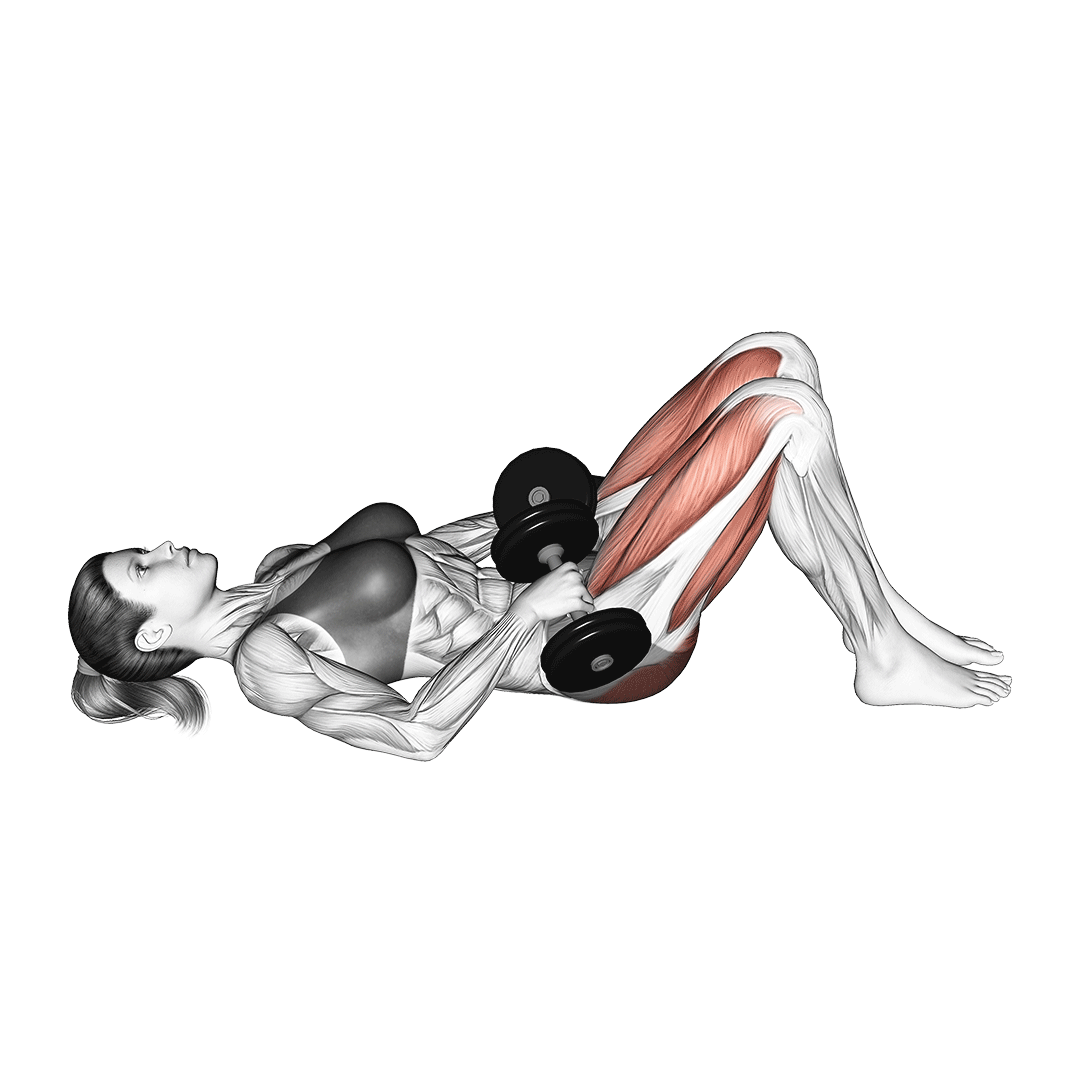
As such, similar low-impact and high-volume exercises like the hip thrust and back extension are most appropriate for individuals newer to training as a whole.
Conversely, exercises like the stiff legged deadlift are better left for exercisers who already have some experience under their belt, and find that said exercises are appropriate for their training needs.
Glute Bridge Alternatives
1. Hip Thrusts
Perhaps the most ideal alternative to glute bridges is the hip thrust - of which is mechanically similar, but involves the addition of weight, the pelvis remaining elevated throughout the seat and a significantly larger range of motion.
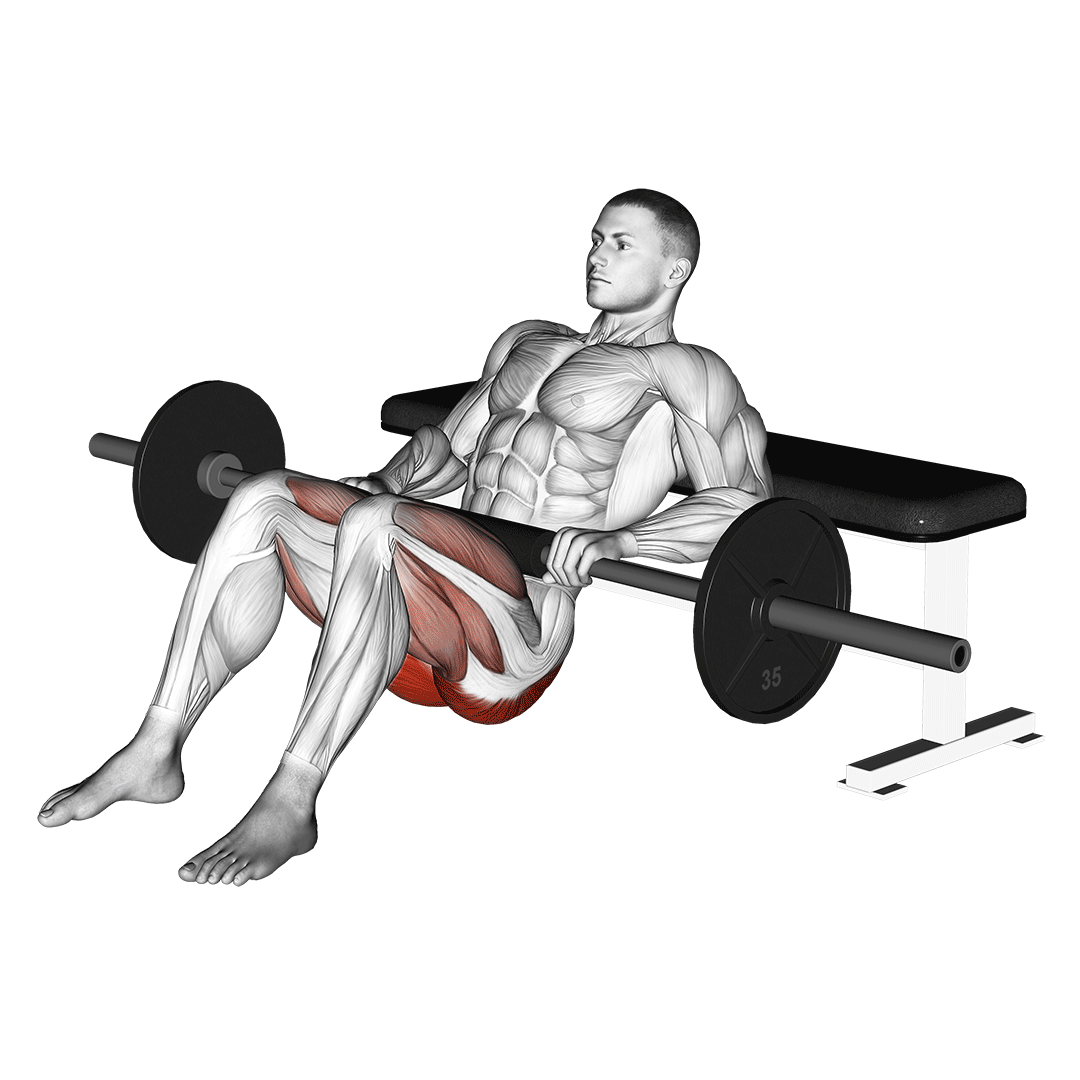
Hip thrusts are a multi-joint compound resistance exercise most often used by bodybuilders and fitness models to grow the muscles of the glutes and hamstrings, although they see usage in nearly all types of training program.
Muscles Worked by Hip Thrusts
Hip thrusts work the muscles of the quadriceps femoris, the gluteal muscle group and the hamstrings.
Benefits and Purpose as a Glute Bridge Alternative
Hip thrusts may act as a direct substitute or even as a progression to glute bridges, as they allow for greater loading and a longer time under tension to be placed on the posterior chain muscles.
Furthermore, individuals wishing to continue the same muscular recruitment pattern (i.e. glutes and quadriceps) will find that the hip thrust is the ideal alternative for their needs.
How-to:
To perform a repetition of the hip thrust, the exerciser will rest their upper back against an exercise bench with the legs bent before them, a loaded barbell placed atop their pelvis.
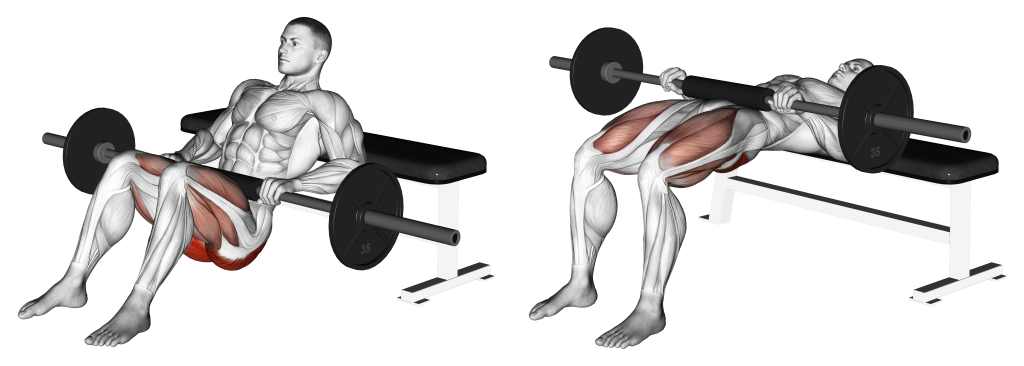
Then, ensuring that the core is contracted and the action performed slowly, they will thrust their hips upwards until the pelvis is parallel with the torso.
From this point, the lifter will then lower their hips back to its original position, thereby completing the repetition.
2. Banded Side-Steps or Banded Lateral Steps
A classic glute exercise among fitness models and bodybuilders; the banded side-step is a multi-planar isolation exercise perfect for acting as a more dynamic replacement to the glute bridge.
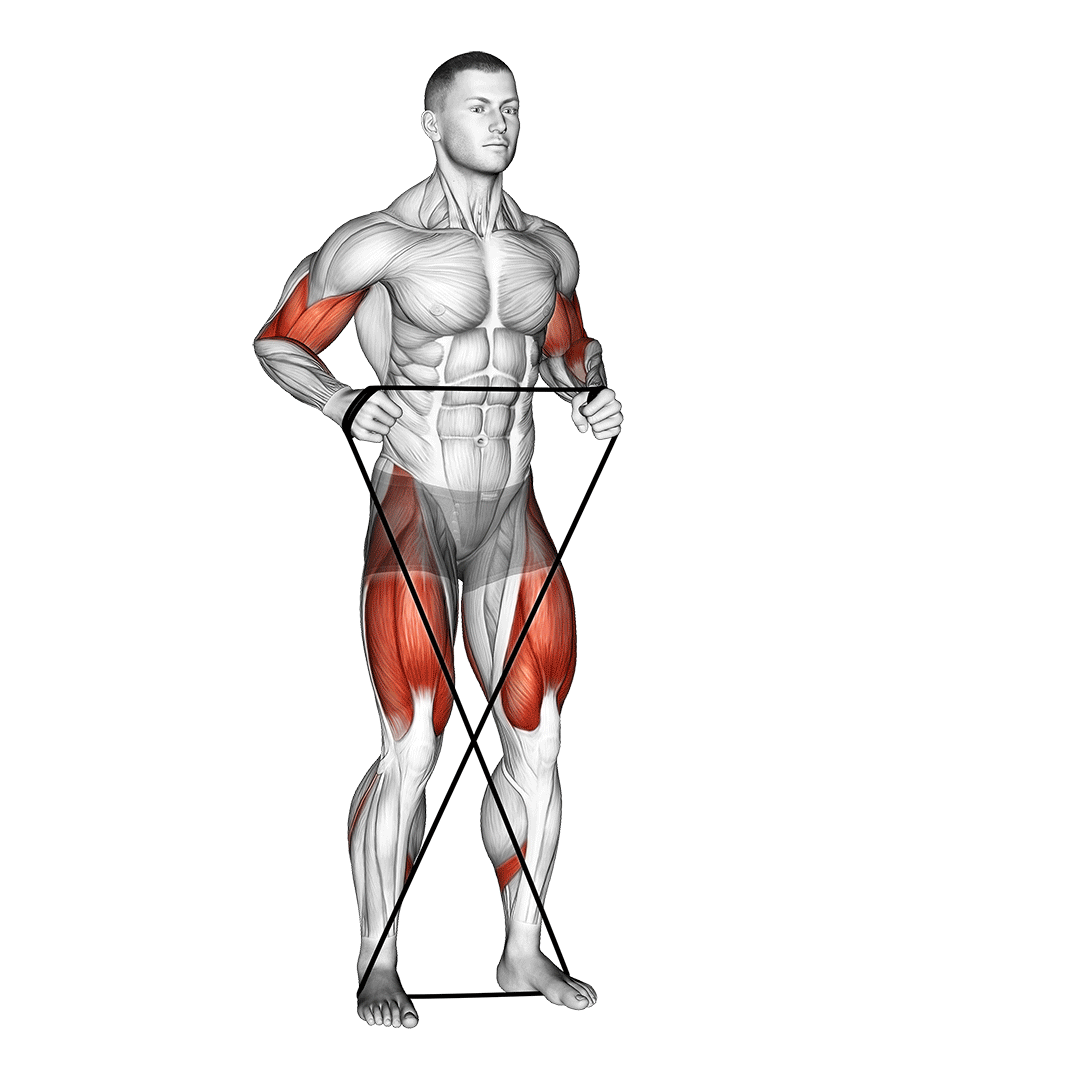
In comparison to many other glute-focused resistance exercises, the banded side-step is particularly useful for individuals new to resistance training as a whole, as it features a distinctly lower risk of injury.
Muscles Worked by Banded Lateral Steps
Banded lateral steps work the glutes and hamstrings.
Benefits and Purpose as a Glute Bridge Alternative
Apart from sharing much the same intensity and muscular recruitment as glute bridges, banded side-steps also reinforce general movement of the hips - reducing future risk of injury and enhancing general lower body stability.
How-to:
To perform banded side-steps, the exerciser will stand in a half-squat position with a resistance band wrapped around their ankles. The legs should be set far enough apart to maintain tension in the band.
Ensuring that the legs remain bent throughout the movement, the exerciser will then take a small step to their side, following with the opposite leg.
From this point, the repetition may be considered complete - although some exercisers prefer to measure the banded side-step by distance, rather than repetitions.
3. Machine Leg Curls
For a wider-reaching posterior chain exercise, the machine leg curl more than fulfills the role of the glute bridge.

Leg curls are a machine-based compound exercise where the lifter will lie atop a padded bench and curl their legs backwards, utilizing mechanics like knee flexion and the entire musculature of the posterior chain in high-volume sets.
Muscles Worked by Machine Leg Curls
Machine leg curls work the gluteal muscle group and those of the hamstrings.
Benefits and Purpose as a Glute Bridge Alternative
Machine leg curls can provide a ready machine-based alternative to the glute bridge, and fulfills much the same role as an accessory posterior chain exercise.
How-to:
Lying face-down atop the pads of the leg curl machine, the lifter will grip the handles for stability and hook their ankles beneath the pad at their feet.
Then, ensuring that the only moving joint is the knees, the lifter will curl their legs inwards against the resistance of the pad.
Once the heels are almost parallel to the knees, the lifter will simply reverse the motion in a slow and controlled manner, thereby completing the repetition.
4. Back Extensions
Though primarily performed for training the lower back, back extensions are also quite effective at working the gluteal and hamstring muscle groups with only bodyweight resistance - making them distinctly similar to that of the glute bridge.
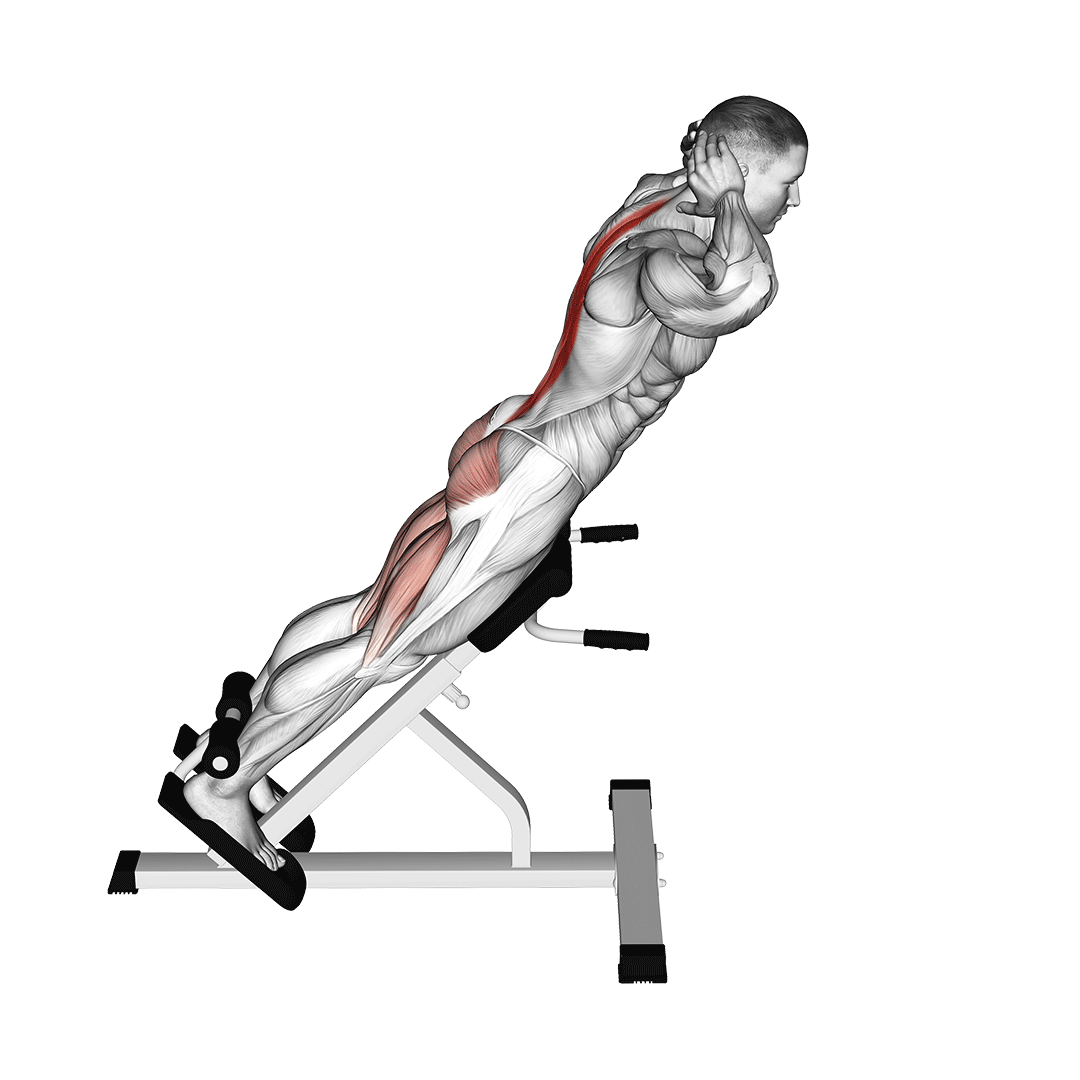
Back extensions are a single-joint compound movement featuring a distinctly different angle of resistance and set of mechanics to the glute bridge, but nonetheless the same training effect.
Muscles Worked by Back Extensions
Back extensions work the glutes, hamstrings and erector spinae to a moderate intensity.
Depending on the angle of the bench used, more focus can be placed on the erector spinae, or the leg muscles.
Benefits and Purpose as a Glute Bridge Alternative
Back extensions may be performed in much the same way as glute bridges; as a secondary compound exercise for high training volume.
Unlike most other exercises that target the posterior chain, back extensions do not utilize any mechanics relating to the knee, and provide the added benefit of improving general spinal stability in addition.
This makes them excellent for novices and individuals who are particularly worried about injuring their posterior chain.
How-to:
To perform a repetition of back extensions, the lifter will stand in the back extension bench with their pelvis held comfortably against the pads, but their waist high enough that they may bend at the hips.
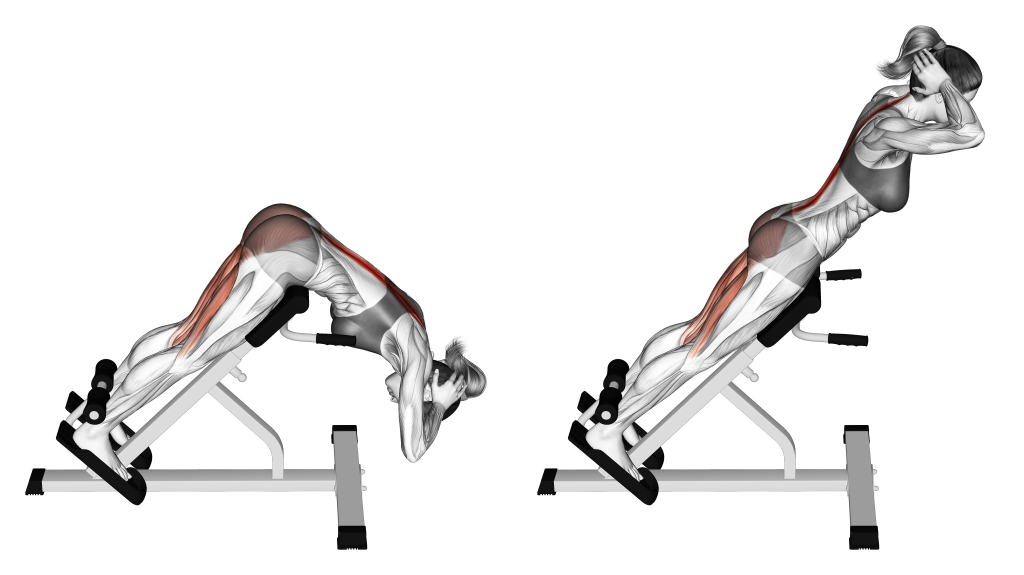
Then, bending at the waist and ensuring the spine is kept straight, the lifter will lower themselves until they have reached the limit of their mobility.
To complete the repetition, the lifter will simply reverse the motion and return to their original position in the back extension bench.
5. Stiff-Legged Deadlifts
For exercisers seeking a significantly more intense and technical movement, glute bridges may be substituted for stiff-legged deadlifts.
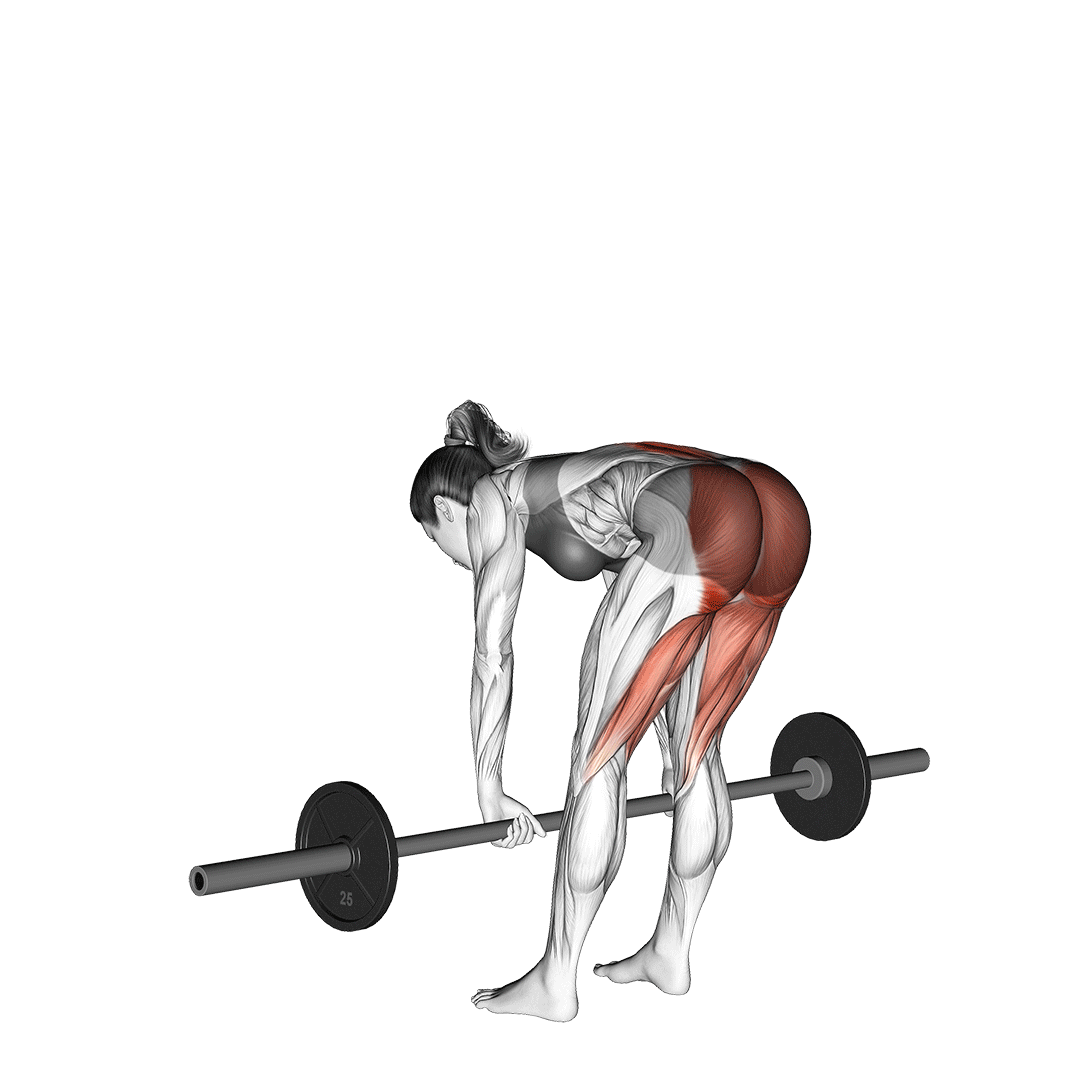
While the two exercises are drastically different in nearly all aspects, the stiff-legged deadlift places a similar emphasis on the gluteal muscles, resulting in significantly greater development as well.
From a more technical view, the stiff-legged deadlift is a multi-joint compound movement involving recruitment of the entire lower body in low-volume but considerably high-resistance sets.
Muscles Worked by Stiff-Legged Deadlifts
The stiff-legged deadlift will work the muscles of the glutes, hamstrings, quadriceps, the majority of the back and the core musculature.
Benefits and Purpose as a Glute Bridge Alternative
Stiff-legged deadlifts are likely the heaviest exercise in this article, and as such will build not only glute size but also full-body strength and power as well.
Furthermore, stiff-legged deadlifts can be an excellent tool for learning more complex resistance training mechanics than what would be possible with glute bridges alone.
How-to:
Standing before a loaded barbell with the knees bent as little as possible, the lifter will bend at the hips and grip the barbell in a double overhand position. Throughout the exercise, the spine must remain neutral and the core engaged so as to avoid any injury.
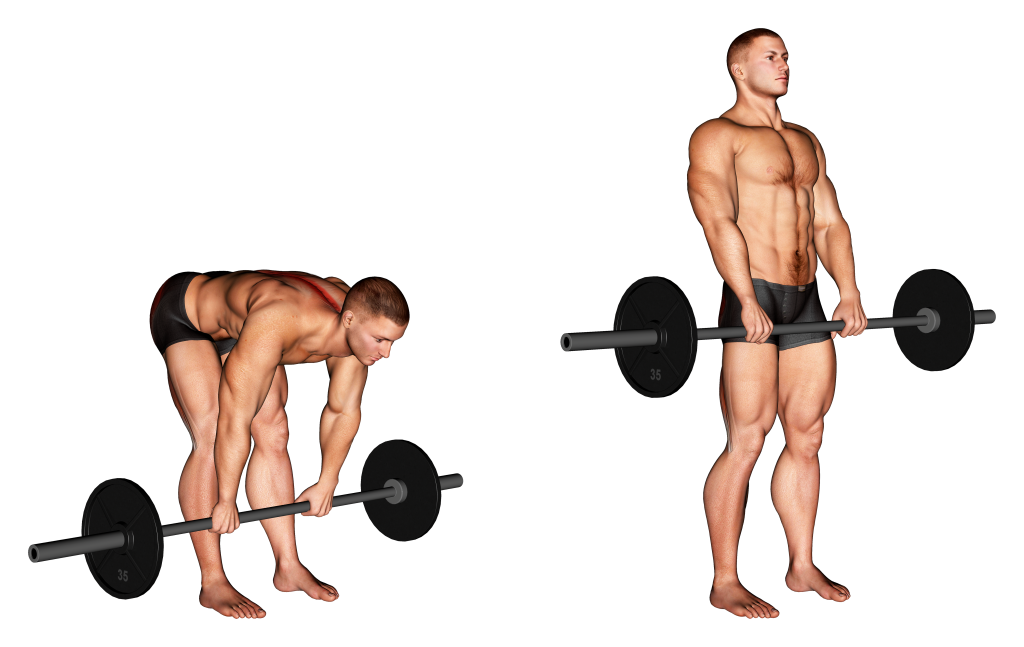
Pushing through the heels, the lifter will pull the barbell from the floor by contracting the muscles of their posterior chain.
Once the barbell is at approximately pelvis-height, the repetition is considered to be complete.
6. Cable Machine Donkey Kicks
For exercisers seeking a more unilateral approach to glute training, the cable donkey kick is the perfect choice.
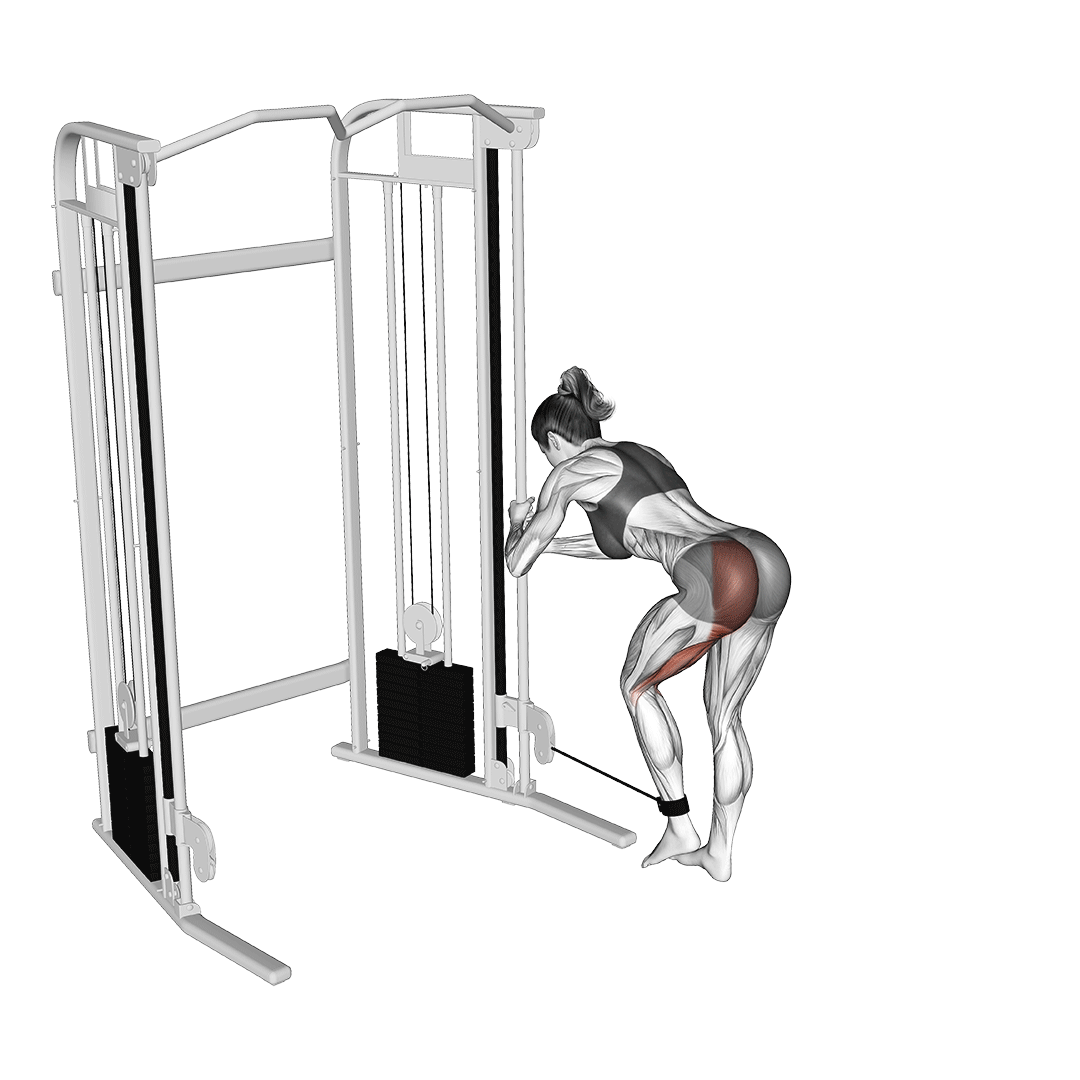
Cable donkey kicks are a multi-joint compound exercise performed with the use of a cable machine, as well as an attachment that can wrap around the foot or ankle.
Muscles Worked by Cable Machine Donkey Kicks
Cable machine donkey kickbacks will work the glutes and hamstrings.
Benefits and Purpose as a Glute Bridge Alternative
Cable donkey kickbacks can act as a substitute accessory movement to glute bridges, but are also excellent for further targeting the glutes and hamstring with low-impact training volume.
Being a machine-based exercise, cable donkey kickbacks are considerably lower risk than many other posterior chain exercises, and provide a lengthy time under tension despite their large range of motion.
How-to:
To perform a repetition of cable kickbacks, the exerciser will stand at arms-width facing the cable machine, the handle wrapped around their foot or ankle.
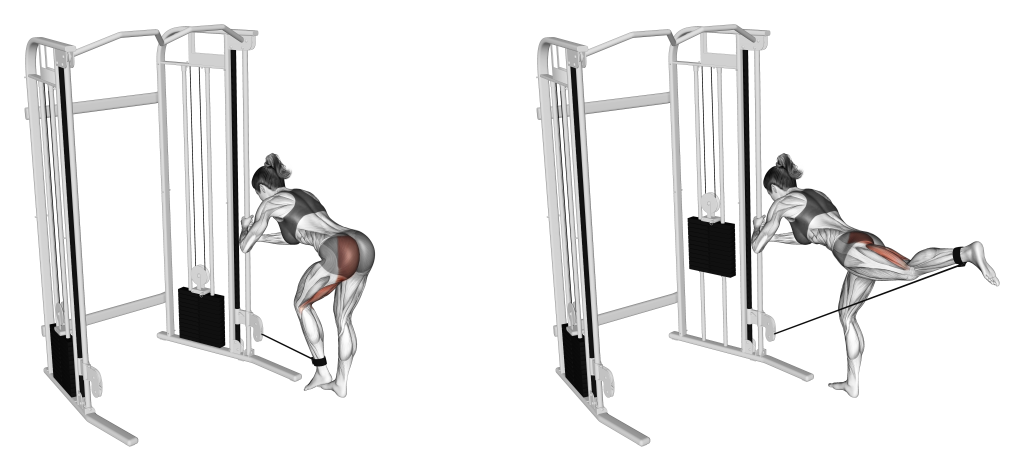
Then, bending forward and holding the arms out for stability, the lifter will extend one leg behind them, leading with the knee joint.
Once the leg is fully extended behind them, the repetition is considered to be complete.
Frequently Asked Questions (FAQ)
Are Glute Bridges Necessary?
Not at all.
While glute bridges are undoubtedly a solid and safe exercise, they are not the most effective mass builder in regards to the posterior chain muscles.
Instead, you may wish to try out weighted hip thrusts and stiff-legged deadlifts.
Can I do Bridges Instead of Hip Thrusts?
Yes - it is perfectly fine to swap out hip thrusts and glute bridges; The two are so close in mechanics and muscular recruitment that they are used almost interchangeably.
Can You Grow Your Glutes Without a Barbell?
Growing glutes without the use of a barbell will require a little creativity, but it is nonetheless still possible.
A few good barbell-less exercises to try are the glute bridge, the cable donkey kickback and the back extension exercise.
In Conclusion
Glute bridges are perfectly fine on their own, but the alternatives listed in this article can help emphasize their many strengths.
Keep in mind that glute bridges are often programmed as a secondary compound movement, and as such any substitution of exercise should reflect in your training program as well.
References
1 Stastny, Petr PhD; Tufano, James J. MS; Golas, Artur PhD; Petr, Miroslav PhD. Strengthening the Gluteus Medius Using Various Bodyweight and Resistance Exercises. Strength and Conditioning Journal 38(3):p 91-101, June 2016. | DOI: 10.1519/SSC.0000000000000221
